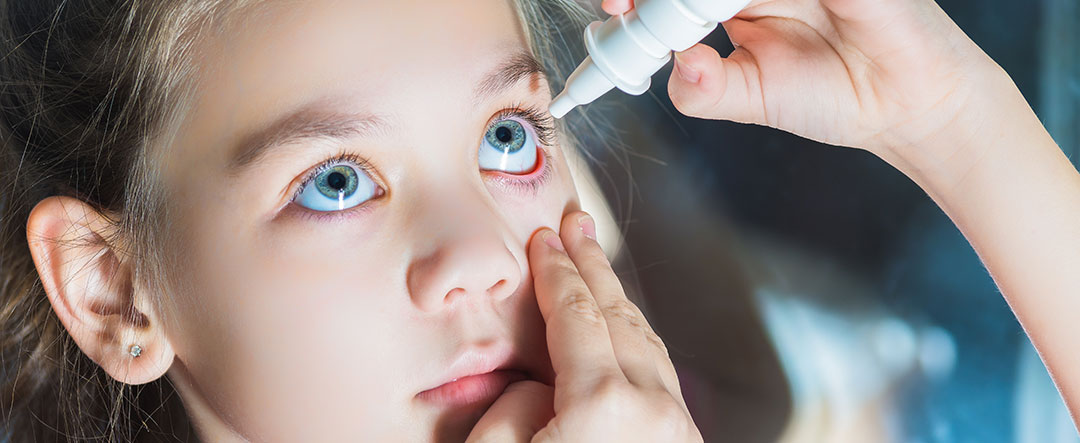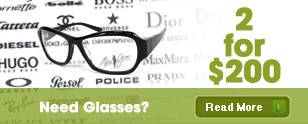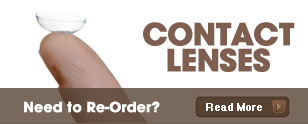Myopia
Management

Myopia (nearsightedness) – Is the ability to see close objects more clearly than distance objects. This is caused by the eye being longer or steeper than normal. This is a quite common condition, 30% of the Canadian population are myopic, however this is expected to double by 2050 according to the WHO (world health organization).
Children are rarely born myopic but grow into it. There are genetic and environmental influences. Much of the increase, research suggests, is due to environmental factors, principally lifestyle changes resulting from a combination of decreased time outdoors and increased near work activities. In Asian countries with “high pressure educations systems“ myopia is even more prevalent probably because children stay inside to study from a young age. This is a hypothesis not a proven fact.
“Myopia Management“ is the term used to describe treatments to slow the progression of nearsightedness in children. These are prescribed by an eye doctor, either an Optometrist or Ophthalmologist. There are four categories of myopia control treatments: Corneal reshaping (orthokeratology/orthoK), myopia control soft contact lenses, myopia control eyeglasses and atropine eye drops. Patients ask why it is important to intervene and slow down the increase of the myopia during the high growth years, as a child can wear glasses or contact lenses and possibly later in life have laser eye surgery after the myopia stops increasing. As eye doctors we know that along with myopia comes the risk of sight-threatening conditions. Elongated myopic eyes have a higher risk for myopic macular degeneration, glaucoma (optic nerve damage), retinal detachments and early cataract formation. For example, an eye that is “-2.00” has 3x the risk of retinal detachment, “-4.00” has 9x the risk and “-8.00” has 40x the risk. Laser refractive surgery does not change these risks. Hence, the lower the dioptric number of myopia the lower the risk for vision loss, and this is why myopia management from a young age is important.
MYOPIA MANAGEMENT TREATMENT OPTIONS:
Studies show that your intuitive sense is correct in that you should encourage your child to spend more time outdoors and limit screen time on computers or other digital devices. By balancing screen time with outdoor time, you may help limit your child’s myopia and protect their vision as they grow older. In addition to these lifestyle changes, doctors recommend myopia management treatment or therapy. These 4 types of myopia control treatments all work on the principle that controlling the defocus around the line of sight can influence the growth of the eye. In other words, your child needs a good focus on the line of sight, but to control myopia needs a specific defocus around the line of sight. With all these treatments the eye doctor will follow the child every 6-12 months thru the growing years.
Low Dose Atropine Eye Drops:
You may be familiar with atropine eye drops. At full concentration they have long been used to widen pupils when examining eyes. Numerous studies show that at very low concentrations, when given to children nightly in their growing years, the progression of myopia is slowed. The slight increase in pupil size does not interfere with vision, when prescribed optimally. Glasses are still needed to see clearly.
Low-dose atropine for myopia is used for children between 5 and 18 years old. The drops are placed in the eye each night at bedtime. Side effects of atropine drops at low doses may include redness or itchiness around the eye, increased light sensitivity and decreased ability to see fine detail up close. The atropine dosage is low enough to minimize these effects but still high enough to achieve myopia control. The optimal dosage will vary between children and the eye doctor will need to monitor these effects. One challenge is that although this treatment is quite established world-wide, there is no commercial drop available yet. Compounding pharmacies prepare the drops prescribed for each child, but this is not always as precise and may not be as stable as a commercial drug.
Myopia Management Soft Contact Lenses:
These special contact lenses have different areas of focus. Think of this type of lens as looking like a dartboard, with multiple circles inside of each other. The center of the lens, or “bull’s-eye,” corrects blurry distance vision, while the outer portions of the lens “defocus” the child’s peripheral vision off the line of sight in a way that does not limit the peripheral awareness.
Like any contact lens, there is risk of cornea infection. Single use one day disposable lenses are the safest modality. Be sure your child can correctly handle, wear, and if needed, clean, and store the contact lenses to avoid infection. Like normal soft contact lenses, there will be some awareness of the lens on the eye all day especially if the lens dries slightly. This happens while staring at a screen and occurs towards the end of the day. It is important the child does not touch or rub the eyes during the day or remove the contact lens at school. The eye doctor will need to monitor for irritation and complications just like with other soft contact lenses. These one-day disposable myopia control soft contact lenses are not available for astigmatism.
Myopia Control Glasses:
New technology myopia control glasses provide clear vision through the centre of the lens and optimally defocus the periphery to allow natural use and still limit myopia development. They look very much like regular glasses. When the child moves their eyes, they will need to turn their head to keep the lens centred on the line of sight, as glasses do not move with eyes the way contact lenses do. These glasses can be used with most prescriptions and don’t involve putting anything into the child’s eyes but appear to provide less effective myopia control than the other treatments available.
Old technology “executive” bifocal glasses achieved limited success at myopia control and are now used less often. They have a line all the way across the lens. Most ‘tweens and teens will not wear an execute bifocal for fear of being teased. Invisible “progressive” lenses have not proved effective at limiting myopic growth.
Orthokeratology (OrthoK)
This is usually the treatment we recommend. Dr Hughes has offered this procedure with great results since 1999 when the technology was developed to design and produce OrthoK lenses precisely. Detailed measurements of the cornea shape are needed to determine which children are good candidates for OrthoK.
Orthokeratology is the only myopia control treatment that frees the child from daytime contacts or glasses. The child can participate in all activities and not experience contact lens irritation all day – enjoying the benefits that adults seek from laser surgery. OrthoK is also the most effective form of myopia control treatment, slowing myopic growth slightly more than the other treatments available.
Custom made contact lenses are worn overnight, shaping the cornea. The lenses are removed in the morning and vision remains clear all day. The lenses need to be worn almost every night to keep daytime vision clear. (most children skip one night on the weekend) If the child stops wearing the lenses, the cornea fully returns to its normal shape and prescription over a period of weeks. In some cases, orthoK may provide some permanent reduction in myopia, unlike any other myopia control treatment. These are custom made lenses so extra appointments are needed during the fitting, unlike soft lens fittings.
There is risk of infection with any contact lens including OrthoK lenses. Clean hands and lenses prior to lens application are very important as serious infections can occur in the closed eye environment. This risk is reduced with OrthoK because the lenses are only worn overnight. The eye surface is very capable of defending and repairing itself during the day when the eyes are open and not wearing contact lenses. Unlike daytime contact lenses, OrthoK lenses are only handled and worn at home so better hygiene is more likely.






